

Sleeves are an intricate part of garment construction. This part of the cloth has both functional and aesthetic purposes Trusted Source Pump up the volume: why massive sleeves are this year's biggest trend | Fashion | The Guardian Unmissable sleeves – with their ruffles, puffs and frills – are ballooning across the catwalk and the high street. And there’s no sign of the trend deflating www.theguardian.com . The designs vary from one garment to the next for various reasons.
In the medieval era, sleeves were cut straight with underarm gussets to allow for easy mobility when wearing the garment. Over the years, the construction techniques have evolved alongside the designs availing an assortment of picks for companies in the fashion industry and consumers. Herein we discuss forty-five different types of sleeves that one is likely to come across when shopping for garments.
Patterns play a fundamental role in helping designers achieve the look they are after. Knowing how to make sewing patterns will come in handy, especially when the sewists try something new. Important to note is that not all clothes require sleeves. There are sleeveless clothes in the market as well. Below we discuss forty-five sleeve types that both novice and seasoned sewers can use for different projects.
Long sleeves are a common type of sleeves that extend from the armhole to the wrist. They are the types of sleeves often seen on shirts, dresses, and other types of clothing. There are several different styles of long sleeves, including fitted, flared, lantern, bishop, kimono, and cape sleeves. Some of these styles, such as the cold-shouldered sleeve, can be considered as both long and short sleeves. Long sleeves provide additional coverage and can help keep the wearer warm, making them a popular choice for cooler weather. Additionally, different types of long sleeves can also be used to create a specific look or style, such as the dramatic and elegant lantern sleeve.
The construction of the lantern sleeve makes it an ideal choice for ornate garments. It is along the sleeve with two sections—the top part of the sleeve flares from the shoulder seam towards the wrist. The lower section of the sleeve flares from the wrist to meet the other part. A seam joins the two pieces, and this results in a flared lantern shape. This alternative is the perfect pick for anyone camouflaging flabby upper arms. The lantern sleeve is among the new trends in the fashion realm.
Sleeve style: bohemian, ethnic, and traditional
Man’s shirt sleeve with cuff is the typical kind that fashion designers use to make an assortment of shirts. This sleeve has two pleats at the buttoned cuff that avail the necessary comfort that the wearer needs. It is also pleasing to the eye, improving the overall appearance of the garment.
The construction also includes a placket opening. This element allows the wearer to put on or remove the garment with ease. The most common use of this kind of sleeve is on men’s shirts, but it is not limited to this application only.
Sleeve style: traditional, formal, and casual
The leg of mutton Trusted Source A sleeve that has a lot of fullness around the shoulder-bicep area but is fitted around the forearm/wrist. Also known as a gigot sleeve. type of sleeve became common in fashionable dresses in the 1820s. The unusual shape influenced the name leg of mutton. The sleeve is characterized by a huge gathering of fabric on the upper arm, which tapers into a tight fit from the elbow all the way to the wrist. This shape mimics the appearance of a leg of mutton. Fashion designers alter certain elements of this sleeve to achieve different results. Leg of mutton sleeves is ideal for children’s clothing and ornamental attire.
Sleeve style: vintage-inspired designs
The Juliet sleeve is named after Shakespeare’s tragic heroine. This sleeve type is inspired by the Italian renaissance period popular fashion. The design of this sleeve is almost similar to the leg of mutton variety. The major difference is the construction. The Juliet sleeve has two parts, with the upper side being voluminous. The sewist uses to join the large upper arm to the fitted sleeve, which makes the lower section of the sleeve. The Juliet sleeve was popular in the 1820s and again in the 1960s.
Sleeve style: romantic and feminine; bohemian or Victorian-inspired designs
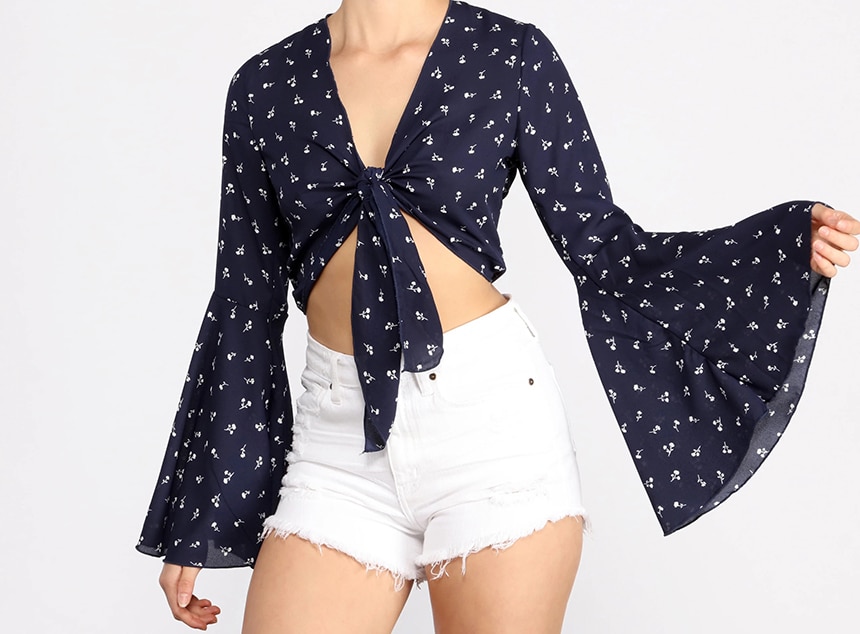
There are different types of bell sleeves, but they all have the same design. The attachment of this sleeve is at the armscye, and it flares towards the bottom, taking on the shape of the belt. It adds a feminine touch to any garment, which is why it is popular in women’s clothes construction. The designer can choose to make the sleeves long or short. This is among the sleeve designs that are seeing a comeback in the modern garment design industry Trusted Source Bell Sleeves: The breezy fashion trend your life needs ASAP Britney Spears did it, just like those French girls of the 16th century. Now, Sonam’s doing it, and so should you. www.indiatoday.in .
Sleeve style: bohemian, hippie, and gypsy, as well as Victorian, Renaissance, and medieval
The frill or flute sleeves are among those that the designers can alter in various ways to achieve the desired effect. There are different types of frill sleeves that one will come across. The choice of material and construction will determine the result. This sleeve type is formed by gathered or pleated fabric. Lightweight fabric with an excellent drape is the best fit for this type of sleeve. When working with delicate material typical of the frill sleeve varieties, the designer should ensure that they use a good pair of sewing scissors to avoid damaging the fabric.
Sleeve style: romantic, boho, and feminine
This is an arm sleeve that is designed to fit the upper arm and features cascading ruffles along the lower portion of the arm down to the wrist. Typically, there are three layers of frills. It is characterized by its wide, flared shape that resembles a pagoda roof, and is typically seen on kimonos, cheongsams, and other traditional garments. This sleeve style can also be incorporated into modern, contemporary fashion designs for a unique and exotic touch.
Sleeve style: traditional oriental or Asian-inspired
The bishop sleeve gives the sewist multiple options regarding the construction. One can opt to have a full alternative of this sleeve or a full one. This is a long sleeve that is fitted at the armhole then becomes wider towards the hem. The fullness is contained in various ways. The most common finish for this sleeve is the use of an elastic band or a cuff. Other design elements can be included in the finishing to make the garment more attractive.
Sleeve style: medieval and Renaissance, bohemian, gypsy, or folk-inspired
This is one of the most popular kinds among women’s sleeve types. The construction is almost similar to the raglan sleeve, but there are some differences. The neck and hem of this sleeve are gathered using a drawstring or elastic. The design provides additional space for the wearer to stretch or engage in other activities that require a wide underarm. The peasant sleeve has common applications in women’s and children’s clothing.
Sleeve style: boho, gypsy, or hippie-chic
The Dolman or Magyar sleeve is among the easiest ones to sew. Beginners will find it easier to work with this sleeve alternative as it is constructed from the same piece of fabric as the bodice. The dolman sleeve is flattering, and it allows for the softening of soft shoulder lines. On the other hand, if the line is weak, the Magyar sleeve will strengthen it. A gusset can be added to the underarm to allow for easy movement by enlarging the same. It can also be added to strengthen the underarm.
Sleeve style: bohemian, ethnic, and casual chic
Padded shouldered sleeves are common in an array of official wear and other selections in the garment industry. A pad is added to the shoulders to alter the appearance of this part of the garment. Different elements can be achieved with the padded shouldered sleeve. Sleeves in this category are made extra wide to accommodate the pad. The padding that the manufacturer uses determines the final result. The illusion created can be a broader shoulder, rounded, or squared.
Sleeve style: 80s power dressing, military-inspired fashion, and some vintage styles
Marmaluke or virago is a long sleeve alternative divided into sections to enhance the beauty of the garment it is sewn into. The partitions are usually five, but some designers ignore this and make more or fewer sections in the sleeve. Gathers are used at the intersections to give the arm a hugging effect that the virago sleeve is known for. This type of sleeve was popular in the period between the 1620s and 1630s. Marmaduke is still utilized in the modern fashion industry to make women’s garments.
Sleeve style: medieval or Renaissance
The barrel sleeve is one of the long alternatives in the clothing construction realm. The design of this sleeve is even at the armhole with no fullness. It is straight with a cuff at the wrist. This sleeve type does not have any fullness at the armhole or the cuff. The cuff in this variation is tighter than the fitted sleeve. It features uniform width giving the sleeve a sophisticated look. The barrel cuff is common in men’s shirts, but the applications do not end here.
Sleeve style: bohemian or folkloric, relaxed
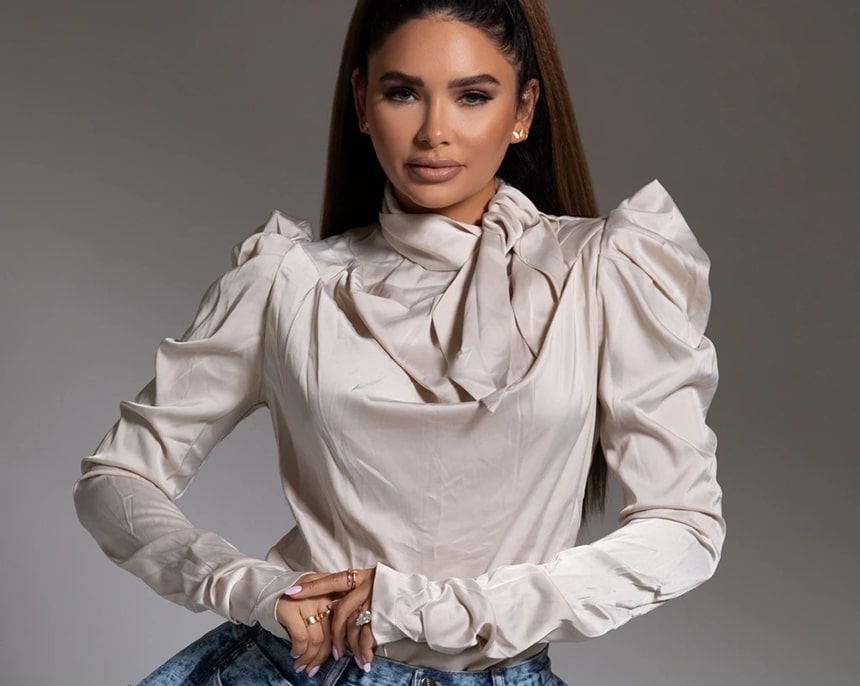
Contemporary fashion designers rely on the puff sleeve to create silhouettes for the different garments they bring to the market. The popularity and prominence of this sleeve are expected to grow in the coming years as it is a timeless design. This sleeve is gathered at the shoulder, where it is attached to the armhole. It puffs out and gathers at the wrist. The finishing at the band and the size of the puff give the garment a preferred look. It is best suited for women’s clothes and theatrical costumes.
Sleeve style: romantic, feminine, and vintage
The balloon sleeve is long. It is gathered at the armhole then puffs out to create the balloon effect. It gathers back at the wrist, but the length remains puffed. The gathers at the shoulder are one variation of this kind of sleeve. In some garments, the sleeve puffs slightly below the shoulder, giving the cloth a classy look. Designers can manipulate the design in various ways to achieve the puff effect that is necessary for a balloon sleeve.
Sleeve style: bohemian, romantic, and vintage
The batwing sleeve Trusted Source From applique to zippers, a comprehensive dictionary with definitions and meanings of key fashion vocabulary, written by Camilla Morton. bears a close resemblance to the dolman alternative. It is commonly used in the construction of women’s clothes and costumes for film and theatre. A wide-cut characterizes the batwing sleeve at the shoulder with deep armholes. It is a long sleeve with extra width to achieve the wing-like effect as it tapers to the wrist. It was a popular design during WW1 and WW2 due to a shortage of fabric. A revival of this sleeve was seen in the 1940s for feminine clothes. Designers utilize the aesthetics of this sleeve in the 21st century.
Sleeve style: bohemian or ethnic
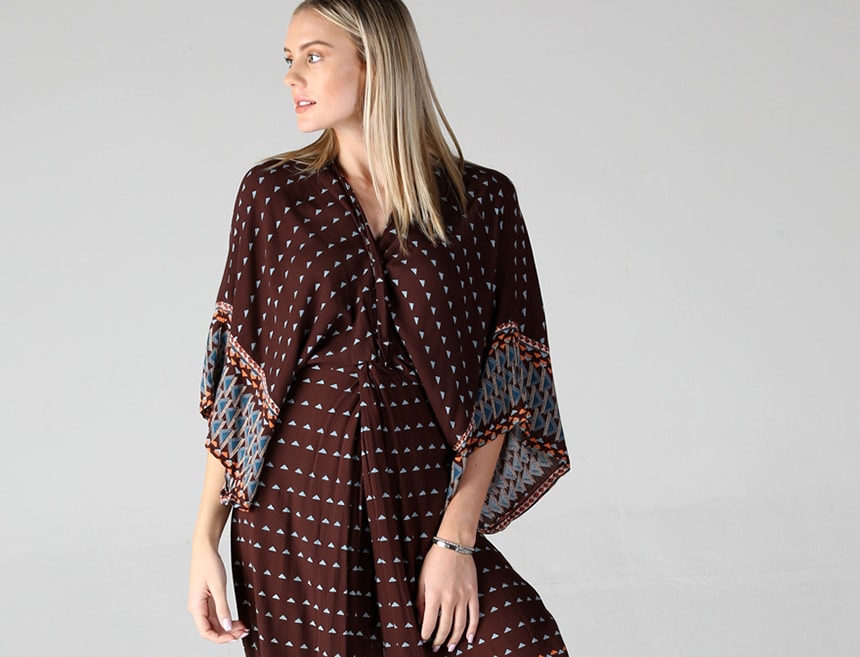
The kimono is a traditional Japanese attire that looks like a bathrobe. The kimono sleeves borrow heavily from the design of the customary cloth. Sleeves in this context are cut together with the bodice. This results in wide sleeves from the shoulder to the hem. The measurements vary depending on the design of the garment that the designer is working on. The ease at the armhole and aesthetic value of the wide hem is among the factors propelling the use of this type of sleeves for an assortment of garments.
Sleeve style: traditional Japanese, relaxed and casual
The layering effect makes it possible for designers to construct the oversleeve. The design contains two sleeves, with one on top of the other. The upper sleeve hangs loosely over the one below. The one above can be altered accordingly to fit the needs of the garment being made. The purpose of the clothing will also dictate the best alternative to use as an oversleeve. Women’s and children’s clothes are among those that benefit from this functional and fashionable type of sleeve.
Sleeve style:
Hanging sleeves are ideal for ceremonial clothes due to the aesthetic value they add to the garment it is added to. The uses of this sleeve type are not limited to this application. It is a long sleeve with a slit that hangs down. The first use of such sleeves goes back to the 15th century when this design was popular, especially for the ruling class. It is an appropriate choice for women’s clothing for different occasions. It is used for both dresses and tops. In recent times, the hanging sleeve is becoming common in women’s blazers.
Sleeve style: ethnic, traditional
As the name suggests, this sleeve variety has a patched elbow. This design helps minimize wear and tear. Additionally, it improves the overall appearance of the garment when contrasting colors are used. Elbow patched sleeves are ideal for everyday wear clothes as they experience strain at the elbow region more often.
The addition of a patch at the elbow adds a sophisticated touch making the cloth ideal for both official and casual wear. This sleeve is common in jackets and sweaters, among other garments.
Sleeve style: historical costume, ethnic attire, and traditional clothing
This type of sleeve has slashes that make a trendy statement. Most teens wear garments that feature the slashed sleeve as it attracts this demographic more than the older ones. The horizontal slits are included in the design, and the number and length vary from one design to the next. Others are finished using decorative stitches that augment the aesthetics of the cloth. The sleeve variety is best suited for denim jackets, t-shirts, and blouses. These slits are not finished in most instances, and the raw edges will fray with time.
Sleeve style: eclectic or retro-inspired
The tailored sleeve has two sections. The seams for this variation of sleeves are at the front, and the back is running down. Other types of sleeves have underarm seams, but this is not the case for the tailored ones. The technique of using the seams at the front and back is to achieve the shape necessary for garments that utilize this sleeve. Women’s and men’s suits are among the common applications of the tailored sleeve. This sleeve has other uses in the garment construction industry.
Sleeve style: formal, business, and casual
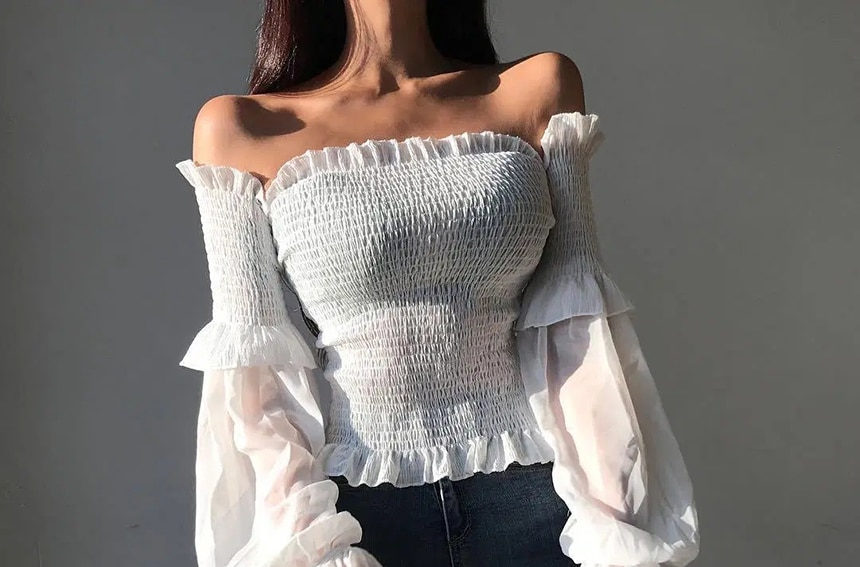
Off-shoulder sleeves have been popular since the 1960s. There are different varieties of the same, each with matchless features that make the garments stand out. The sleeves can be long or short, and they sit under the shoulder bone. Elastic helps cloth makers attain the off-shoulder effect when attached to the neck region to allow the wearer to pull the cloth down. This sleeve is common in women’s dresses and tops. It is a perfect choice for summer wear, especially when paired with lightweight fabric and floral prints.
Sleeve style: summer and casual
This is one of the vintage sleeves that have been around for many centuries. It was widely used in garment construction in France during the 14th and 15th centuries. It is a long sleeve, padded, and is shaped like a bag. In the contemporary world, this sleeve has different applications, but it is not very common. It is an ideal choice for ceremonial wear as it adds a touch of elegance to the garment. Other than women’s clothing, the Mahoitres sleeve can help design costumes for stage performances and motion pictures.
Sleeve style: Renaissance
The Gibson girl sleeve is one that has been around for many years. It is mostly used for women’s clothing both in the classic and modern worlds. The Gibson girl was a personification of femininity and the physical attractiveness of women. The sleeve is delicate and radiates feminine energy with the full shoulder to the elbow. From the elbow to the wrist, the sleeve is fitted, giving the garment a delicate womanly touch. Other than dresses, this sleeve is ideal for women’s sweaters and tops.
Sleeve style: feminine and romantic
The poet sleeve has numerous desirable features that propel its use in the clothing industry. It is fitted from the shoulder to the elbow. After the elbow, the sleeve flares towards the wrist. The long sleeve alternative of the poet goes all the way to the wrist. Other options end mid-hand with either ruffles or cuffs.
The choice between the two finishings is a matter of preference. Also, one has to consider the purpose of the garment featuring the poet’s sleeve. Its common application is in the construction of women’s tops and dresses.
Sleeve style: romantic, whimsical aesthetic, flattering, feminine
A gauntlet is a type of glove constructed for protection purposes. It was used to protect the hands of combatants in battle in Europe from the early 14th century. The gauntlet sleeve features an extended cuff that covers the forearm in women’s clothes. Bridal clothes are among those that utilize this type of sleeve to give the bride an edge. The material that extends to the back of the hand, in most cases, has a V shape. This sleeve type is not common in everyday wear but is ideal for ornate fits.
Sleeve style: Gothic, steampunk, or other alternative fashion
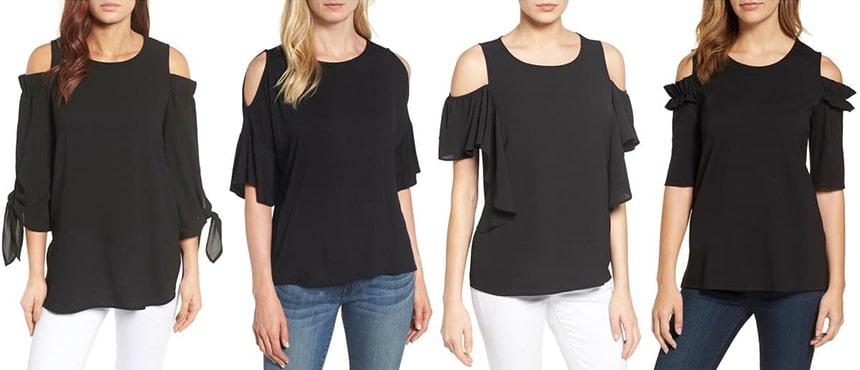
This is another type of open sleeve that one is likely to encounter when handling various projects or shopping for clothes. The cold shoulder sleeve is best suited for women’s and girl’s clothes. It is almost similar to the off-shoulder, but their designs differ. The sleeves hang on the bodice, exposing the shoulder. The sleeve is attached to the bodice with a moon or oval-shaped cutout that exposes the shoulders. It is a common sleeve type in modern women’s clothes.
Sleeve style: casual and formal
These sleeves are quite lengthy or they can be around 3/4 the length of the arm. They have a slit in the front that looks like open sleeves and a cuff at the sleeve’s end.
Sleeve style: ethnic, feminine
Sheer sleeves are made of see-through fabric. They can have various designs or be without any. These are perfect for bridal and evening gowns.
Sleeve style: elegant, wedding
This sleeve is cut in two pieces so that it could take an “L” shape to accommodate the natural bend at the elbow without wrinkling.
Sleeve style: elegant, formal
It is an outdated type of sleeve, rarely used in modern clothing. It is made with panes or panels that allow lining and shirt-sleeves to be seen-through.
Sleeve style: Renaissance
Short sleeves are a type of sleeves that end just above the elbow or at the elbow. They are a common choice for shirts, dresses, and other types of clothing, especially in warmer weather. Some popular types of short sleeves include cap sleeves, flutter sleeves, puffed sleeves, and bishop sleeves. Short sleeves offer versatility and comfort, making them a popular choice for casual and formal wear. Additionally, different styles of short sleeves can add a touch of style or femininity to an outfit.
The regular sleeve is among the standard options that one will use for an assortment of projects as they are ideal for both male and female clothes. It is attached to the armscye with a curved head to fit into the roundness of the shoulder typical of clothes that require this type of sleeve. The construction allows for attachment to the bodice first before the side seams of the sleeve are finished. The process that one has to follow when making the regular sleeve is straightforward, making the workload more manageable for large projects.
Sleeve style: basic
The construction of this kind of sleeve involves using a diagonal seam to join the sleeve to the bodice. The seam runs from the underarm front and back and extends all the way to the neckline. This helps create a wider underarm with more space that gives the wearer flexibility. The application of this type of sleeve is common in sportswear, jerseys, and tops. The raglan sleeve takes attention away from the shoulder due to the lack of a seam around this part.
Sleeve style: casual, sportswear, formal
This is a short-sleeved alternative that covers the upper part of the shoulder only. The cap sleeve is a little detail that sets the garment apart from others in the same family. The sleeve fits on the shoulder and tapers to nothing underneath the arm.
Cap sleeves are ideal for people with wide hips and narrow shoulders as they help widen the upper part of the body, availing much-needed balance. This sleeve is ideal for women’s clothing and attire for special occasions.
Sleeve style: casual
The extended cap sleeves, as the name suggests, are similar to the cap sleeve we discuss above but with an extension to the bodice. The edges of the sleeve taper to nothing as they have a small extension that joins it to the rest of the garment. To achieve this design, beginners in this industry will need sewing tips to help them, especially for hand sewing projects. The extended cap sleeves are best suited for bridal and ceremonial wear.
Sleeve style: casual and formal
This sleeve type has a length that is slightly below the elbow but above the wrist. The idea behind the design is to allow the wearer to see their bracelet, which also explains the name of the sleeve. It is not a typical three-quarter sleeve as they tend to be just slightly above the wrist. This kind of sleeve is one of the most common women’s sleeve types and it may decoratively finish elevating the clothes’ aesthetic value.
Sleeve style: casual, formal, party, ethnic
The cape sleeve is common in bridal dresses and long gowns. The sleeves are an overlay of fabric, in most cases sheer, that is gathered at the shoulder and flares out like a cape. This type of sleeve gives the dress or gown a stylish finish that makes them ideal for celebratory occasions. The sleeve can be inbuilt or an attachment that can be removed. The removable alternative of the circular sleeve is most preferred over the inbuilt ones. It gives the wearer the freedom to alter the aesthetics of the gown or dress accordingly.
Sleeve style: bohemian or whimsical, romantic
This sleeve is designed with a puffed upper portion and has a relaxed fit near the hemline, lacking the typical cuff found on regular puff sleeves. It is a popular design for women’s fashion, particularly in dresses and tops. The style can complement different body types by providing a flattering and graceful look.
Sleeve style: bohemian, flowy, or romantic
The armhole in most garments is circular, but this is not the case for the square armhole sleeve. This armhole design is angular rather than circular, and this feature makes this sleeve variation stand out. Square armhole sleeves are ideal for garments worn during tasking activities as it allows for free movement.
The applications for this type of sleeves are numerous in the clothing industry. One can also transform the basic sleeves into a square armhole alternative when handling DIY projects.
Sleeve style: casual, sporty, and athletic
The petal sleeve does not have an underarm seam as the two edges of the fabric overlap each other. The name is derived from the sleeve’s shape, which resembles the petals of the tulip flower. The layered panels of fabric allow for the formation of this shape as it is sewn on the bodice. The petal sleeve is usually short or skimpy. This is because it is hard to achieve the tulip petals effect on a long sleeve.
Sleeve style: romantic or feminine, traditional
This type of sleeve is common in the making of graduation gowns and robes. It is a long wide sleeve that hangs loosely on the side of the garment. It dates back to the renaissance period where sleeves were cut with extra fabric to create the illusion of wings. There are many ways to make this sleeve, and the design elements give rise to the various alternatives that we see in contemporary clothing. Women’s garments are among those that feature this type of sleeves in the design for beauty reasons.
Sleeve style: boho-chic, romantic, and fairy-tale
The Epaulet sleeve is a type of sleeve style often seen in military-inspired or militaristic clothing, such as jackets or coats. It is characterized by a small shoulder ornament or flap, called an “epaulet,” that sits on the shoulder.
Sleeve style: militaristic
It is a shoulder-styled sleeve and it doesn’t expose the shoulder. The armpiece extends beyond the shoulder making this sleeve extremely comfy and oversized. These sleeves can be found n T-shirts, sweaters and sporty clothes.
Sleeve style: casual, sporty
This kind of sleeve has an exceptional design that improves the aesthetics of the garment. The top part of the sleeve is fuller than the lower section. A drapey effect is necessary to create the desired fullness at the top. In some instances, the designer may have to use elastic to achieve the extra breadth at the top of the sleeve. According to a ton of reviews on the wide web, the sewist should use the best sewing machine for such designs to avoid ruining the fabric. Computerized sewing machines from reputable manufacturers ought to be considered first.
Sleeve style: Grecian or Roman-inspired gowns
The drawstring puff sleeve can be long or short. It is commonly used in women’s clothing and that of children as well. It is similar to the puff sleeves but with unique detail. A drawstring or a cuff is used alongside the gathered hem to form a frill which gives the garment a distinctive shape.
Over the years, this technique has been borrowed for different parts of a garment to achieve a crunched look. Applications for the drawstring puff sleeve are many in the clothing industry.
Sleeve style: Bohemian, romantic, and street
After cutting the pattern for this sleeve variation, the fabric that the sewists end up with is a circle. The constructions result in a flutter that most designers prefer to use for kid’s clothes. The flutter sleeves give adult feminine clothes a dramatic appearance. The circular sleeves’ fullness makes them the perfect choice for anyone looking to add the illusion of heaviness on the shoulder region. People with broad shoulders should avoid garments with flutter sleeves as it will make them appear bigger than they are.
Sleeve style: bohemian, romantic, and casual
This sleeve is very short but full in shape, with gathers creating ruffles.
Sleeve style: bohemian, romantic, or feminine-inspired
This type can be short or long-sleeved. The designers include a thin strip of fabric to the hem of the sleeves during the finishing process. The strap can be elastic or just a normal fabric. The design process is straightforward for both beginners and seasoned sewers. It increases the strength of the sleeve, guaranteeing years of service to the wearer. This type of sleeve is common in shirts and t-shirts for both men and women. Children’s clothes also feature this sleeve design that is durable and aesthetically pleasing.
Sleeve style: eclectric
Lengthwise fabrics that are wider in the middle are used in the sewing of the melon sleeve. Stiffened fabric is used to achieve the desired shape for this sleeve. The use of material that is broader in the middle helps create the melon effect. This is for the long-sleeved variety of the melon sleeve. The short-sleeved alternative is rounded from the shoulder to the elbow with a band or cuff finishing. Its uses are diverse, with women clothing construction topping the list due to the detail.
Sleeve style: feminine
There are several popular types of sleeves found on shirts, including:
The 3 basic types of sleeves are set-in (found in shirts and dresses, where the sleeve is sewn into the armhole of the garment, creating a seamless look), raglan (extends in one piece from the neckline to the cuff, with seams running from the underarm to the neck and down the upper arm), and drop shoulder (characterized by the shoulder seam extending beyond the natural shoulder, creating a dropped shoulder look, found in oversized or relaxed-fit garments).
Sleeves are typically classified based on their length, shape, and style. Some common classifications include length, shape, and style.
A French sleeve is a type of sleeve that is fitted at the top, close to the armhole, and then flares out into a wide, bell-shaped cuff. This style of sleeve is often seen on more formal or dressy garments and can add a touch of elegance and femininity to the overall look.
Different sleeve styles play both functional and beauty roles in a garment. There are various types of sleeves, and the sewists pick the best alternative for the garment they are working on. Using the correct equipment to prepare and sew the fabric is essential for one to attain the desired results. According to reviews from experts, the Kai 7250 10-inch shears are the best for the different fabrics available. The purpose of the clothing is the first and main factor that dictates the best design for one to choose so choose wisely the most suitable sleeves for you.